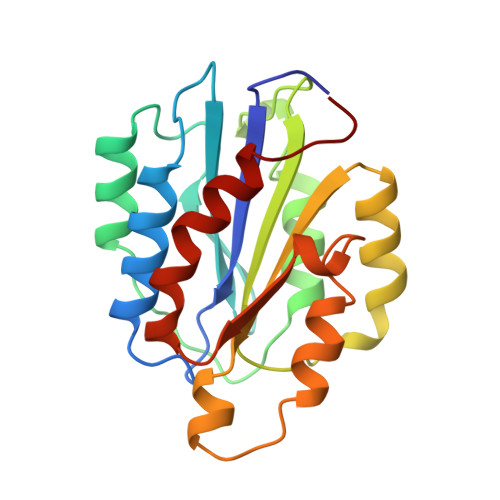Crystal structure of the I domain from integrin alpha2beta1.
Emsley, J., King, S.L., Bergelson, J.M., Liddington, R.C.(1997) J Biological Chem 272: 28512-28517
- PubMed: 9353312
- DOI: https://doi.org/10.1074/jbc.272.45.28512
- Primary Citation of Related Structures:
1AOX - PubMed Abstract:
We have determined the high resolution crystal structure of the I domain from the alpha-subunit of the integrin alpha2beta1, a cell surface adhesion receptor for collagen and the human pathogen echovirus-1. The domain, as expected, adopts the dinucleotide-binding fold, and contains a metal ion-dependent adhesion site motif with bound Mg2+ at the top of the beta-sheet. Comparison with the crystal structures of the leukocyte integrin I domains reveals a new helix (the C-helix) protruding from the metal ion-dependent adhesion site face of the domain which creates a groove centered on the magnesium ion. Modeling of a collagen triple helix into the groove suggests that a glutamic acid side chain from collagen can coordinate the metal ion, and that the C-helix insert is a major determinant of binding specificity. The binding site for echovirus-1 maps to a distinct surface of the alpha2-I domain (one edge of the beta-sheet), consistent with data showing that virus and collagen binding occur by different mechanisms. Comparison with the homologous von Willebrand factor A3 domain, which also binds collagen, suggests that the two domains bind collagen in different ways.
- Department of Biochemistry, University of Leicester, Leicester LE1 7RH, United Kingdom.
Organizational Affiliation:

















